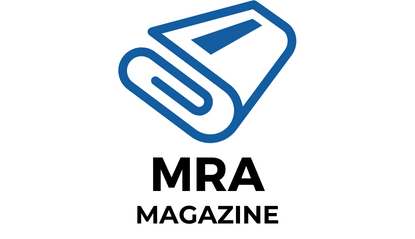How Can Osteopathic Manipulative Treatment Support Injury Rehabilitation in Rugby Players?

In the world of sports, injuries are an almost inevitable part of the game. Rugby, in particular, is a sport that is famous for its high intensity and frequent physical contact, often leading to various injuries. These range from concussions and cervical conditions to sprains and fractures. Rehabilitation is a critical element post-injury, and it plays a vital role in how quickly and effectively an athlete can return to the sport.
One often overlooked tool in this recovery process is Osteopathic Manipulative Treatment (OMT). This article discusses the role of OMT in the treatment of rugby-related injuries. It will delve into the effectiveness of this treatment method, backed by scholarly evidence and studies. As you continue reading, we’ll review several sources, including Google scholar and PubMed, providing you with a table of conditions that OMT may help treat.
Sujet a lire : What’s the Role of Reflexology in Enhancing Recovery for Professional Cyclists?
The Fundamentals of Osteopathic Manipulative Treatment
Before taking a deep dive into the benefits of OMT for rugby-related injuries, it is essential to grasp what OMT is. Osteopathic Manipulative Treatment is a hands-on care technique. It involves using the hands to diagnose, treat, and prevent illness or injury. Using OMT, an osteopathic physician can move your muscles and joints using techniques that include stretching, gentle pressure, and resistance.
OMT goes beyond merely focusing on the injury. Instead, it adopts a holistic approach to health, acknowledging the interconnection between all parts of the body. This approach can be highly beneficial in a sport like rugby, where an injury in one area can impact several others.
A lire aussi : What’s the Effectiveness of Sand Training for Improving Stability in Beach Volleyball Players?
According to a study published on PubMed, OMT can effectively treat musculoskeletal pain, a common occurrence in rugby. This underscores the relevance of OMT in the rehabilitation process of injured rugby players.
OMT and Post-Concussion Symptoms
Rugby, like other high-contact sports, carries a high risk of head injuries, including concussions. These are not only painful but also potentially dangerous, and the subsequent symptoms can be debilitating. According to a review on PubMed, post-concussion symptoms (PCS) can include headache, difficulty thinking, memory problems, attention deficits, mood swings, and frustration.
OMT can help in the management of these symptoms. A 2016 study published on Google Scholar showed that osteopathic treatments could reduce the severity of post-concussion symptoms. Moreover, OMT can address other secondary problems related to concussion, such as neck pain and dizziness.
OMT’s Role in Treating Cervical Conditions
In rugby, neck or cervical injuries are prevalent due to the high-impact nature of the sport. These injuries can be acute or chronic, and their treatment is crucial to prevent long-term damage and to ensure the player can return to the sport safely.
OMT can play an essential role in treating such cervical conditions. A 2017 PubMed study revealed that osteopathic treatment could significantly reduce pain in patients with chronic cervical conditions. This suggests that OMT could potentially be an effective method for treating rugby players suffering from similar chronic conditions.
The Broad Impact of OMT on Sports Injuries
The benefits of OMT extend beyond treating concussions and cervical conditions. The manipulative treatment can also help a wide range of other injuries common in rugby players, such as lower back pain, hamstring injuries, shoulder dislocations, and knee ligament injuries.
A systematic review on Google Scholar of several studies showed OMT’s effectiveness in reducing pain and improving functional outcomes in a variety of musculoskeletal conditions. By improving pain management and function, OMT can significantly enhance the overall rehabilitation process, allowing athletes to return to the sport more quickly and safely.
OMT: A Valuable Tool for Rugby Player Rehabilitation
In conclusion, OMT offers a wealth of benefits for rugby players recovering from injuries. Its holistic, hands-on approach not only addresses the pain and physical limitations associated with injuries but also looks at the entire body’s function and health.
Whether it’s treating post-concussion symptoms, managing cervical conditions, or dealing with other musculoskeletal injuries, OMT has proven to be effective in numerous studies reviewed on platforms like PubMed and Google Scholar. Therefore, it’s clear: OMT should be considered as a vital part of the rehabilitation process for injured rugby players.
Osteopathic Manipulative Treatment and Heart Rate Variability
Heart Rate Variability (HRV) refers to the variation in the time interval between heartbeats. It is a crucial parameter in assessing an athlete’s health and measuring their response to training and recovery. In rugby players, managing HRV can significantly aid in their rehabilitation process, especially after a hard-hitting game or injury.
Incorporating Osteopathic Manipulative Treatment (OMT) can have a substantial impact on improving a player’s HRV. A study available on Google Scholar highlights the role of OMT in positively influencing HRV. This is achieved through the holistic treatment approach adopted by OMT, which can provide an optimal environment for the body to heal and recover.
OMT techniques, such as manipulation of the thoracic spine and visceral manipulation, can not only aid in relieving musculoskeletal pain but also improve heart rate variation. This balance can notably contribute to enhancing a rugby player’s endurance and performance, thereby helping them recover swiftly and effectively.
Moreover, OMT can support rehabilitation by addressing the overall health and wellbeing of the player, beyond just the injury or condition. This includes factors like mental health and sleep patterns, both of which can significantly influence HRV and overall recovery.
Detailed Outcome Measures of OMT in Rugby-related Injuries
Evaluating the effectiveness of OMT in treating rugby-related injuries requires a detailed analysis of outcome measures. These can include parameters such as pain reduction, improved function, return to play times, and enhanced quality of life.
Numerous studies available on PubMed and Google Scholar have demonstrated significant improvements in these areas following OMT. For instance, in treating post-concussion symptoms, OMT has shown effectiveness in reducing the severity of headaches, improving cognitive function, and managing mood swings and frustration. When dealing with cervical conditions, it has demonstrated significant pain reduction and improvement in mobility.
In terms of return to play times, a study on ClinicalTrials.gov showed that rugby players who received OMT during their rehabilitation process were able to return to the game sooner than those who did not. They also reported a higher quality of life, including better sleep quality and improved mental wellbeing.
When considering eligibility criteria for incorporating OMT in rugby player rehabilitation, it’s essential to remember that OMT is a safe and non-invasive treatment, suitable for most players. However, individual athletes should consult their healthcare provider to determine if OMT is an appropriate treatment option for them.
Conclusion: OMT as a Key Part of Rugby Player Rehabilitation
To conclude, OMT holds significant potential as an essential tool in the rehabilitation process of rugby players. Its hands-on, holistic approach not only helps manage various injuries and conditions, but it also improves players’ overall health and wellbeing.
From managing post-concussion symptoms and cervical spine conditions to improving heart rate variability and providing positive outcome measures, OMT has demonstrated its effectiveness in numerous studies on Google Scholar and PubMed. It’s also worth noting that OMT aligns with the criteria of contact sports, making it a suitable choice for rugby players.
However, like any treatment, it’s important to remember that every individual’s response to OMT may vary. Therefore, consulting with a healthcare provider or an osteopathic physician is recommended to determine if OMT is the best choice for an individual’s specific needs.
Given its broad range of benefits, Osteopathic Manipulative Treatment should undoubtedly be considered as a vital component of the rehabilitation process for injured rugby players. This approach can help athletes make a quicker and safer return to the sport they love, contributing positively to the all-important world of rugby.
